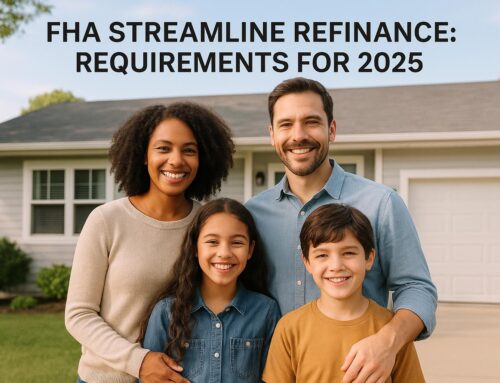When deciding between a second home and an investment property, understanding their differences is crucial. Here’s a quick breakdown:
- Second Home: Primarily for personal use, with occasional rental allowed. Requires at least 14 days of owner occupancy annually or 10% of rental days. Lower down payment (10–20%) and credit score requirements (620–680) compared to investment properties.
- Investment Property: Focused on generating income through rentals or appreciation. Requires higher down payments (25–30%) and credit scores (700+). Offers broader tax benefits, like deductions for depreciation, repairs, and property management.
Quick Comparison:
| Feature | Second Home | Investment Property |
|---|---|---|
| Primary Purpose | Personal retreat | Income generation |
| Down Payment | 10–20% | 25–30% |
| Credit Score | 620–680 | 700+ |
| Tax Benefits | Limited | Extensive |
| Owner Occupancy | Required (14+ days/year) | Not required |
| Management | Minimal | Hands-on involvement |
Deciding between the two depends on your goals: Are you looking for a vacation getaway or a way to generate income and build wealth? Keep reading for detailed insights into financing, taxes, and property use rules.
Second Homes vs Investment Properties [Financing Options Explained]
How Second Homes and Investment Properties Differ
The main difference between second homes and investment properties lies in how they are used. Let’s break down the key traits of each.
Second Homes: A Personal Getaway
Second homes are all about creating a personal haven, a place to relax and enjoy. To qualify as a second home, the property typically needs to:
- Be livable throughout the year
- Be located in a vacation spot or close to your primary home
- Be used occasionally by the owner
People usually choose second homes based on their lifestyle and preferences. Popular choices include:
- Beachfront properties
- Mountain cabins
- Lakeside homes
- Places near family
- Favorite spots for leisure activities
Investment Properties: Built for Income
Investment properties, on the other hand, are focused on generating revenue. These properties can earn money in several ways, such as:
| Income Source | Description |
|---|---|
| Rental Income | Payments from tenants renting the property long-term |
| Property Appreciation | The property’s value increasing over time |
| Tax Benefits | Deductions for expenses and depreciation |
When buying investment properties, the focus shifts from personal enjoyment to financial potential. Buyers look at factors like:
- High demand for rentals
- Signs of job growth in the area
- Quality of nearby schools
- Local crime rates
- Likelihood of the property increasing in value
"Investment properties offer more extensive tax benefits. You can deduct mortgage interest, property taxes, operating expenses, repairs, property management fees, and depreciation against the rental income." [2][4]
These distinctions also influence how financing and taxes are handled, as discussed in later sections.
Mortgage and Financing Requirements
Getting financing for a second home or an investment property comes with distinct requirements compared to a primary residence mortgage. These differences affect both your eligibility and your monthly payments.
Down Payments and Loan Terms
The down payment requirements for second homes and investment properties are higher than for primary residences. Here’s a breakdown:
| Property Type | Minimum Down Payment | Typical Credit Score | Cash Reserves Required |
|---|---|---|---|
| Second Home | 10% | 620–680 | 2 months |
| Investment Property | 15–25% | 700+ | 6 months |
| Primary Residence | Starting at 3% | 500–620 | Varies |
Interest Rate Differences
Interest rates for second homes and investment properties are generally higher than those for primary residences. For second homes, rates may be up to 0.50% more than primary residence rates. Investment property rates, on the other hand, often range from 0.50% to 0.75% higher [5]. These rate hikes reflect the added risks lenders associate with non-primary residences.
Credit and Cash Reserve Rules
Lenders apply stricter qualification standards for second homes and investment properties. Here’s what you need to know:
Second Homes:
- Credit score: 620–680
- Debt-to-income ratio (DTI): Up to 45%
- Cash reserves: At least two months of payments
Investment Properties:
- Credit score: 700 or higher
- Debt-to-income ratio (DTI): Up to 45%
- Cash reserves: At least six months of payments
The stricter requirements for investment properties are due to their higher risk. It’s also worth noting that government-backed lending programs, which often provide flexible terms for primary residences, generally aren’t available for investment properties [1].
If you’re looking for guidance tailored to your situation, check out the loan options available at HomeLoanAgents. They can help you navigate the complexities of financing second homes and investment properties.
sbb-itb-8115fc4
Tax Rules and Benefits
Understanding the tax considerations for second homes and investment properties is a key part of making smart real estate decisions. Here’s a breakdown of the tax rules for each type of property.
Second Home Tax Benefits
If you own a second home, the Tax Cuts and Jobs Act of 2017 allows you to deduct mortgage interest on qualified debt up to a combined total of $750,000 for your primary residence and second home. Additionally, you can deduct property taxes, but only up to the $10,000 cap on state and local taxes (SALT).
To qualify for these deductions, your second home must primarily serve personal purposes. This usually means you need to use it for at least 14 days per year and limit rental use to 14 days or less annually. Renting it out beyond that timeframe could result in the property being classified as an investment asset instead [1].
Investment Property Taxes
Investment properties offer more extensive tax deductions because they are treated as income-generating assets. In addition to mortgage interest and property tax deductions (which aren’t subject to the same limits as second homes), you can also deduct costs such as:
- Insurance premiums
- Maintenance and repairs
- Property management fees
- Travel expenses related to managing the property
- Utilities, if you cover them as the owner
Another major tax advantage is depreciation. Residential rental properties can be depreciated over 27.5 years, reducing your tax liability even if the property’s market value increases over time [4].
When selling an investment property, you can defer capital gains taxes by reinvesting the proceeds into another property using a 1031 exchange – a benefit not available for second homes [4].
Rental income must be reported on Schedule E of your tax return. While this adds to your taxable income, the various deductions often help balance out the tax impact. For tailored advice and to ensure compliance with IRS rules, consider consulting experts like HomeLoanAgents.
Property Use Rules
How a property is used plays a big role in determining its legal status, financing options, and potential tax benefits.
Second Home Usage Limits
For a property to qualify as a second home under IRS guidelines, you must use it personally for at least 14 days per year or 10% of the total days it’s rented out – whichever is greater [6].
Some key restrictions for second homes include:
- Renting is limited to 180 days per year [3].
- If rented out for more than 14 days annually, rental income must be reported.
- The property must remain under your exclusive control [4].
Additionally, most lenders require second homes to meet these criteria:
- Be located 50 to 100 miles from your primary residence.
- Be suitable for year-round living.
- Be directly controlled by the borrower.
These rules not only affect how the property is financed but also the tax benefits you might qualify for.
Investment Property Requirements
Investment properties are subject to local rules and regulations that govern their operation. Here’s a quick breakdown of common requirements:
| Requirement Type | Common Regulations |
|---|---|
| Legal Documentation | Business licenses, rental permits, property registration |
| Safety Standards | Regular inspections, smoke detector certifications, building code compliance |
| Management Rules | Local property manager (if owner lives 50+ miles away), 24/7 emergency contact |
| Tenant Rights | Fair housing compliance, tenant screening, standardized leases |
In addition to these, investment properties may also need to comply with:
- Specific zoning designations for rental use.
- Local rent control laws.
- HOA rules that may limit or restrict rentals.
Failing to accurately disclose a property’s intended use during the mortgage process can lead to serious consequences, including loan default, financial penalties, or even criminal charges [4]. To stay on the safe side, keep thorough records like utility bills, travel receipts, and maintenance logs to prove compliance with these regulations.
These requirements have a direct impact on both financing terms and how the property is treated for tax purposes.
Conclusion: Second Home or Investment Property?
Choosing between a second home and an investment property comes down to what fits your financial goals and lifestyle. Here’s a quick comparison to help clarify the differences:
| Factor | Second Home | Investment Property |
|---|---|---|
| Primary Purpose | Personal retreat | Building wealth |
| Down Payment | Lower initial cost | Higher upfront investment |
| Tax Benefits | Basic deductions | Broader tax advantages |
| Management | Minimal oversight | Hands-on involvement |
This table highlights the main tradeoffs you’ll need to weigh. Beyond these, financing terms and tax rules also play a big role in shaping your decision.
If you’re leaning toward a second home, think about:
- Enjoying regular access to a vacation getaway.
- Managing a smaller down payment.
- Keeping property management responsibilities light.
If building wealth is your priority, consider:
- Having the funds for a larger down payment.
- Taking on active property management tasks.
- Maximizing tax benefits tied to rental income.
- Earning steady income from tenants.
For investment properties especially, keeping detailed records is key. Tracking rental income and expenses can directly impact your tax strategy [7]. Ultimately, your choice will influence both your short-term financial commitments and your long-term financial growth.
FAQs
What are the tax rules if I rent out my second home for more than 14 days a year?
If you rent out your second home for more than 14 days in a year, the IRS requires you to report that rental income on your tax return. The good news? You can claim deductions for expenses tied to the rental activity. This includes costs like maintenance, repairs, and property management fees. Just remember, the way you divide the property’s use between personal and rental purposes can impact how much you’re allowed to deduct. To stay on the right side of the tax rules and make the most of your deductions, it’s a smart idea to consult a tax professional.
How do interest rates for second homes and investment properties differ from primary residence rates?
Interest rates for second homes and investment properties tend to be higher compared to primary residences. For second homes, rates are generally about 0.50% higher, while investment property rates are roughly 0.75% higher. This is because lenders see non-primary residences as a higher risk.
However, the exact rates you’ll qualify for can depend on several factors, including your credit score, the type of loan, and current market conditions. To get a clear picture of your options, it’s always smart to speak with a mortgage professional.
What should I think about when choosing between a second home and an investment property?
When choosing between a second home and an investment property, the first step is to pinpoint your main goal. Will the property primarily serve as a personal getaway, or are you looking to earn rental income? This clarity is key to making the right decision.
Financing is another critical factor. Mortgages for second homes typically come with different terms and conditions than those for investment properties, so it’s important to understand the requirements. Beyond that, consider the tax implications, the ongoing upkeep the property will require, and how it aligns with your broader financial plans. Carefully weighing these aspects will help you feel confident in your final decision.
Related posts







